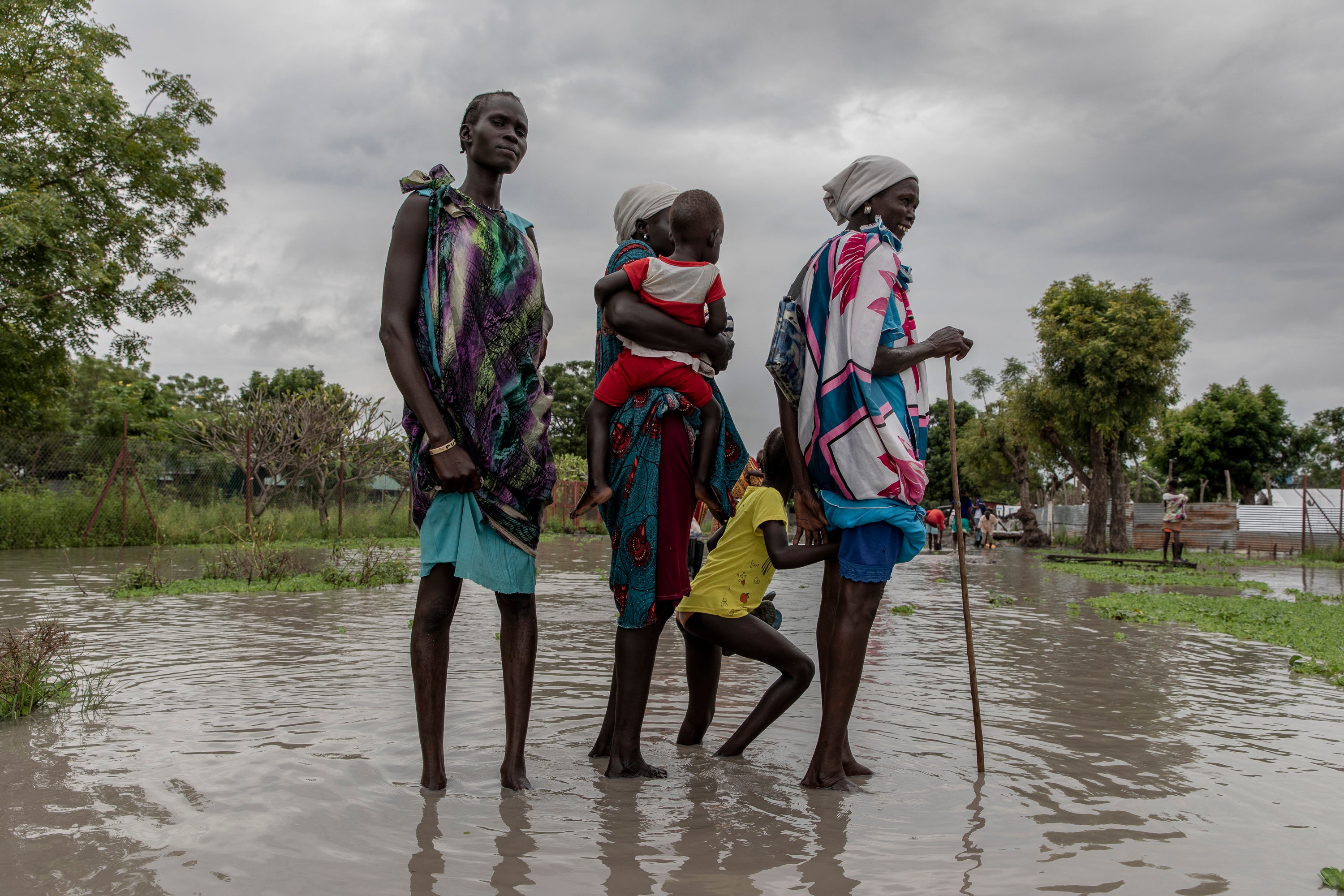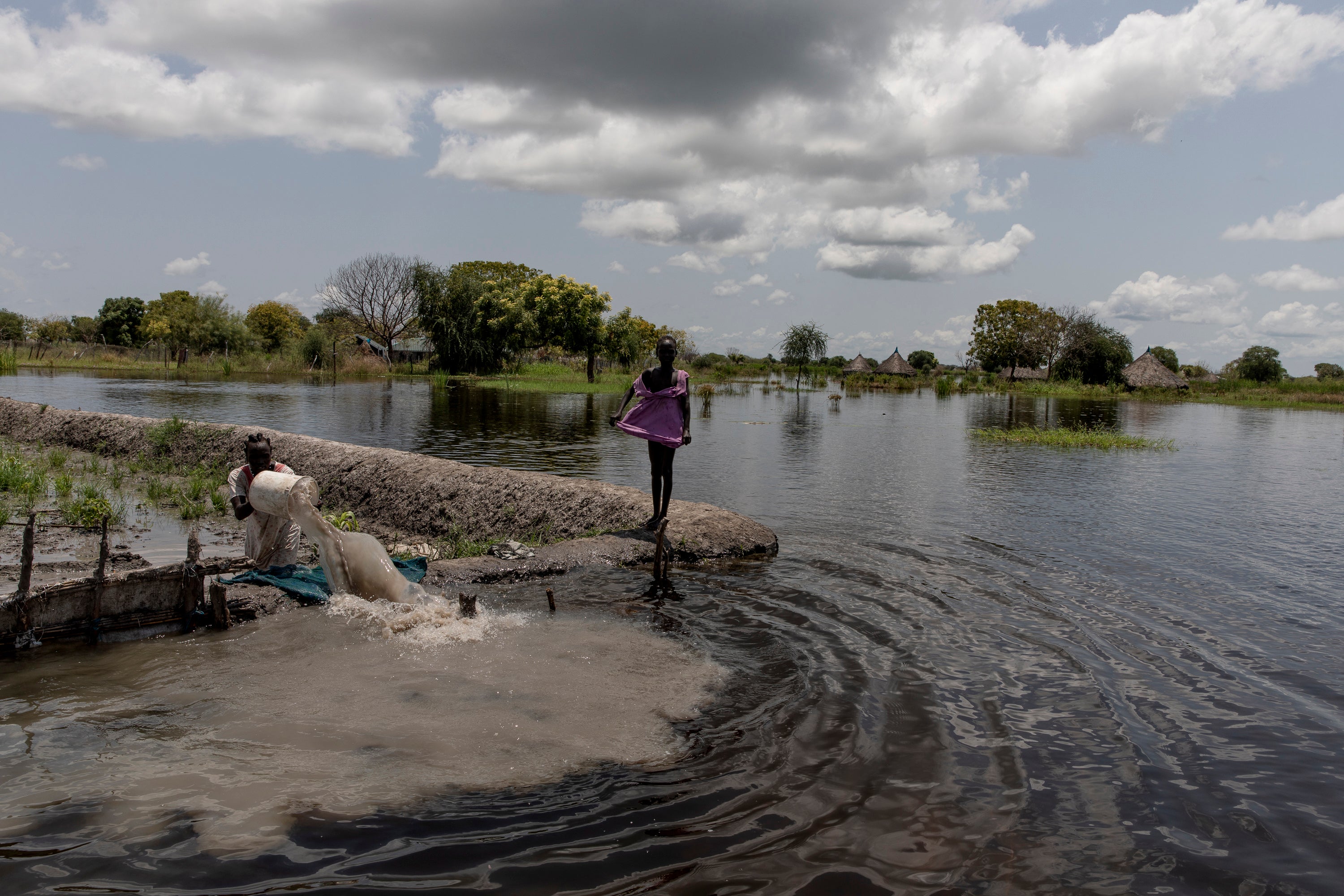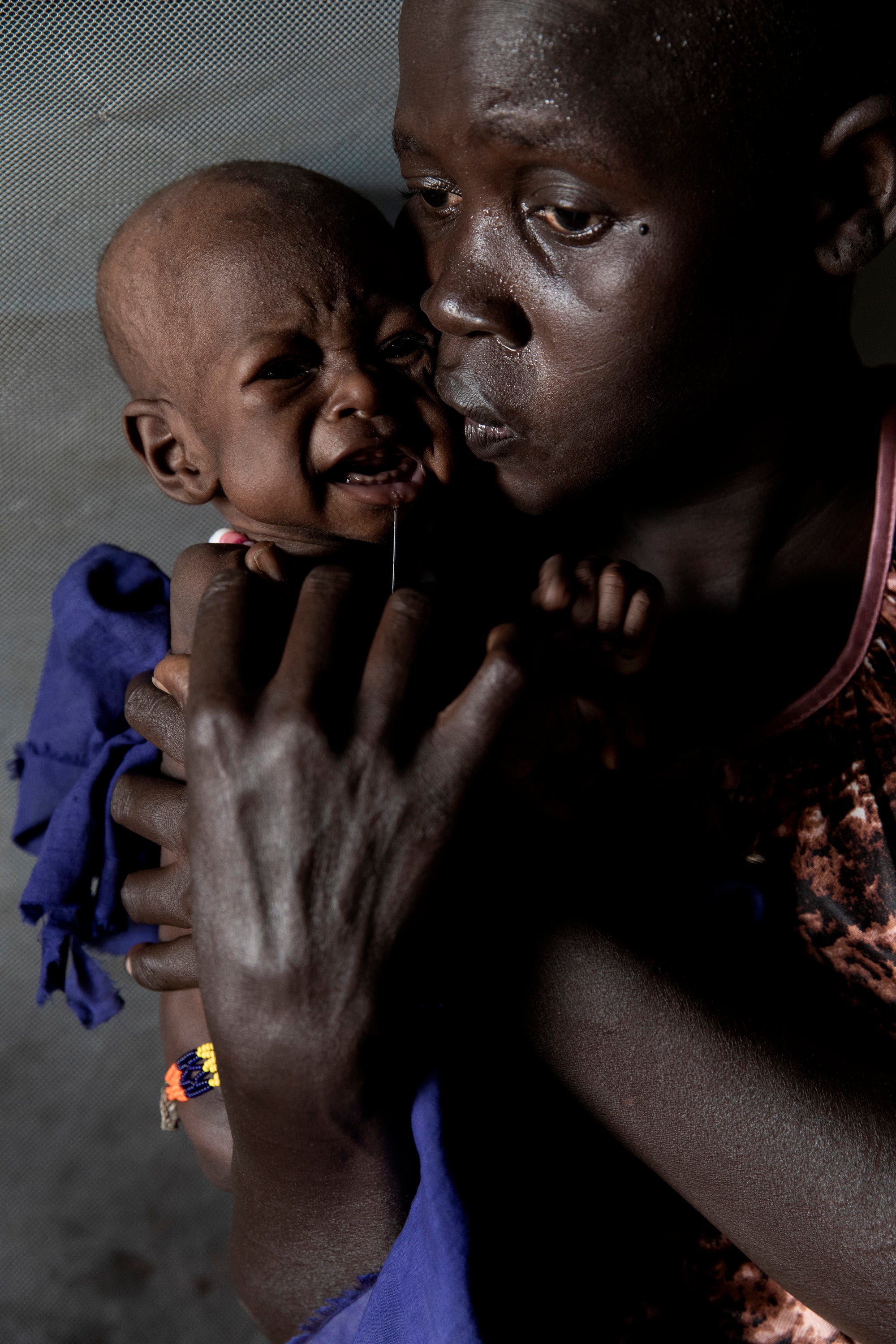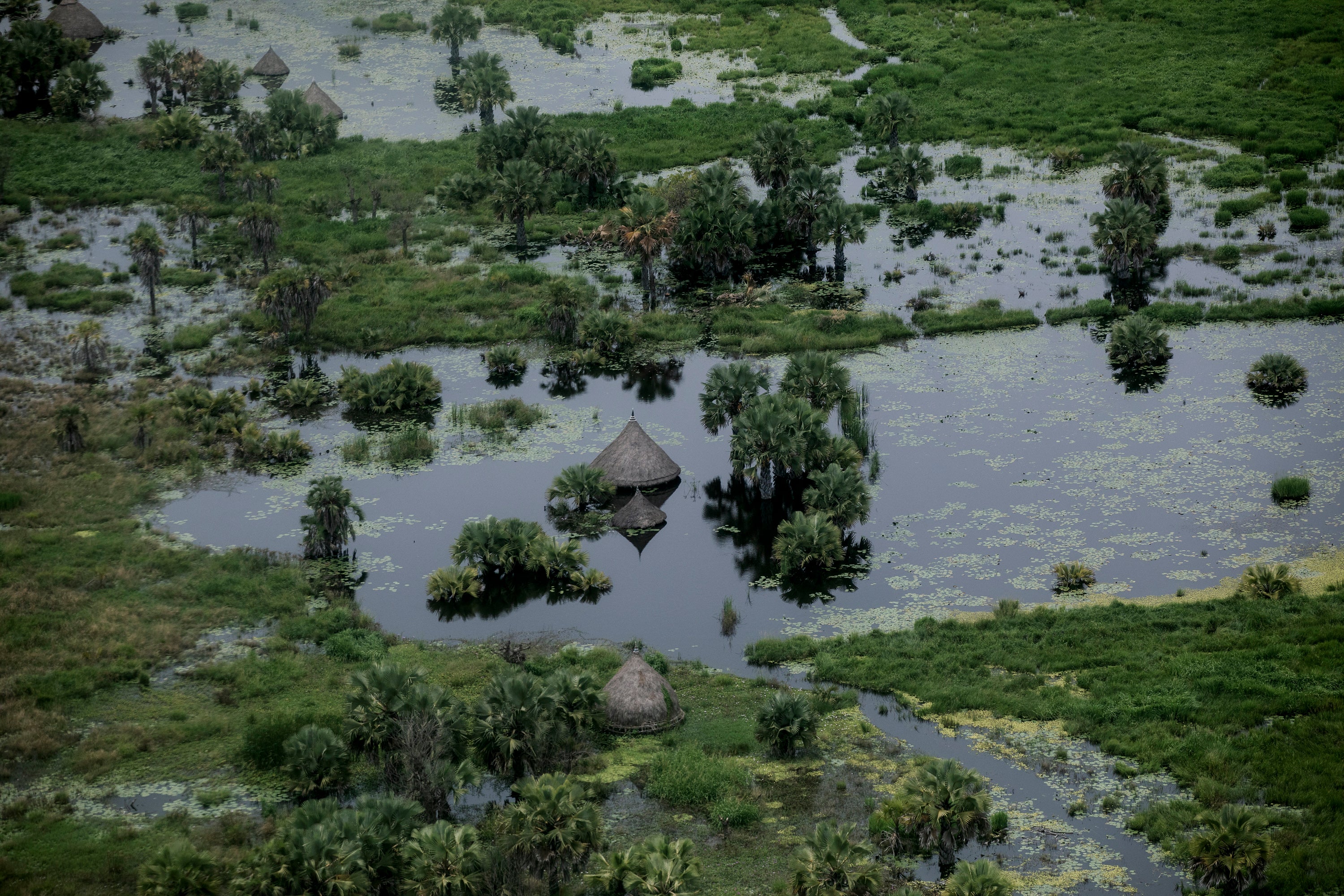‘We don’t have anywhere to go’: Flooding in South Sudan threatens a nation on the edge
Record flooding is displacing hundreds of thousands of people in South Sudan, and cases of starvation and malaria are increasing in an already struggling nation, reports Rachel Chason

Every year, South Sudan has a rainy season. But the water levels since 2019 have set records.
Flooding this year displaced more than 700,000 – about one in every 15 people in South Sudan. In some cases, mothers had so little to eat that they could not breastfeed. Cases of malaria and other waterborne illnesses surged. People spent days building mud dykes that served as their only protection from the waters.
Among the most vulnerable each year are people living in villages in the Sudd – a vast wetland with grasses so thick that its name is derived from the Arabic word for “barrier”. Here, the White Nile and its tributaries swelled to levels people said they had never seen.
As war devastated this land over decades, the Sudd was a refuge for Angelina Nyajany Wan and her family. But floods in recent years wiped out the maize and sorghum that they used to farm. With nothing else to eat, they started relying on the fish they caught and water lilies they collected for sustenance.
“I’ve noticed the water level increasing every day, but I have no options,” she said. “I don’t know how I can help these kids.”
The situation is so dire because South Sudan is one of the world’s poorest countries, plagued by widespread violence and almost completely lacking in development. “This is one of the worst-case scenarios that can exist,” said climate scientist Mouhamadou Bamba Sylla.
Climate scientists say the floods in 2019 and 2020 were driven in part by global warming-linked changes in a weather pattern called the Indian Ocean Dipole
The rising waters are driving what the World Food Programme says is the biggest hunger crisis to hit South Sudan since it became independent from Sudan in 2011. More than 60 per cent of the population is considered at a crisis level or worse.
Nyapuoka Ruot’s daughter, who she named Nyamuch, or “gift”, was born among the floods this year. After her crops and cattle died, Ruot had enough food for only one meal a day. She was unable to produce breast milk for her daughter.
A pained look flashed across Ruot’s eyes each time Nyamuch reached for her breast. All that came out was a watery mixture. She had only the water she used to boil fish to feed the girl. “I blame myself,” Ruot said. “I blame God. I blame the floods.”

A few dozen feet away, a relative’s dead cow floated in the tide, the most recent example of what the water had taken.
The dead cow belonged to Chokruot Yuot, who said the loss especially stung because cattle in South Sudan are used for marriage, trading and sustenance. “Cattle,” he said, “mean everything.”
Climate scientists say the floods in 2019 and 2020 were driven in part by global warming-linked changes in a weather pattern called the Indian Ocean Dipole. In Australia, the dipole caused unprecedented bush fires in 2019 and 2020. In east Africa, it led to extreme floods. The rains this year have been so catastrophic for a different reason: the water from the past two years simply never receded.

WFP country director Matthew Hollingworth put it like this: “You’ve got one shock compounding another, compounding another. In a country that is already so fragile, climate change is one of the biggest potential destabilising factors.”
The floods are driving not only malnutrition – there have also been spikes in malaria, snake bites and diarrhea, according to staff at Doctors Without Borders, which runs one of the only hospitals in the area around Old Fangak, a town at the heart of the Sudd.
Nyaka Yomlat, who had been feverish for days, started convulsing one October morning. Her family carried the 16-year-old into a dugout canoe, which her uncle used to push the unconscious girl toward the hospital.
Her family learned at the hospital that she had malaria – part of a surge of patients Doctors Without Borders had seen. It was the sixth time that calendar year, Yomlat said after she regained consciousness, that she had tested positive.
In another hospital bed was Nyaruot Jok, who had made a three-day journey by canoe from her village to the hospital so that her daughter could be treated for malnourishment. The little girl had started to gain weight, doctors said. But the family’s new home in Old Fangak had also flooded.
“I am scared,” Jok said as she sat in a bed in the hospital, which had to mechanically pump water out to avoid being flooded itself.
Seen from above, the destruction was clear: home after home was submerged. Entire villages were abandoned. Plots of land once used for farming were underwater. And people in the region were forced to live with the water.

Nyadieng Tut was inside her home when heavy rains caused it to collapse. Tut, who was seven months pregnant, fled nearby to higher ground.
The main thoroughfare in Old Fangak used to be dry land. Then it became a massive channel of sometimes waist-high dirty water. Daily life here – including getting to school, church, the market or the hospital – required navigating it.
After spending the night scooping buckets of water from their home, Martha Nyakoang said she and her family decided to take a break only for church, which meant wading through water for more than an hour. Gesturing toward the sky, Nyakoang said she had one prayer: for the rains to return to normal.
Smacking a wooden club into the dirt, Gatdor Chan worked to build up the makeshift dyke that protected his family’s home from the rising water. On the other side were the wild animals – crocodiles, cobras and pythons – that Chan said had been increasingly encroaching. “We don’t have anywhere to go,” he said. “So we have to protect what we have here.”
The fight felt futile. For every dyke built and bucket of water scooped, there was more.
© The Washington Post
Join our commenting forum
Join thought-provoking conversations, follow other Independent readers and see their replies
Comments
Bookmark popover
Removed from bookmarks